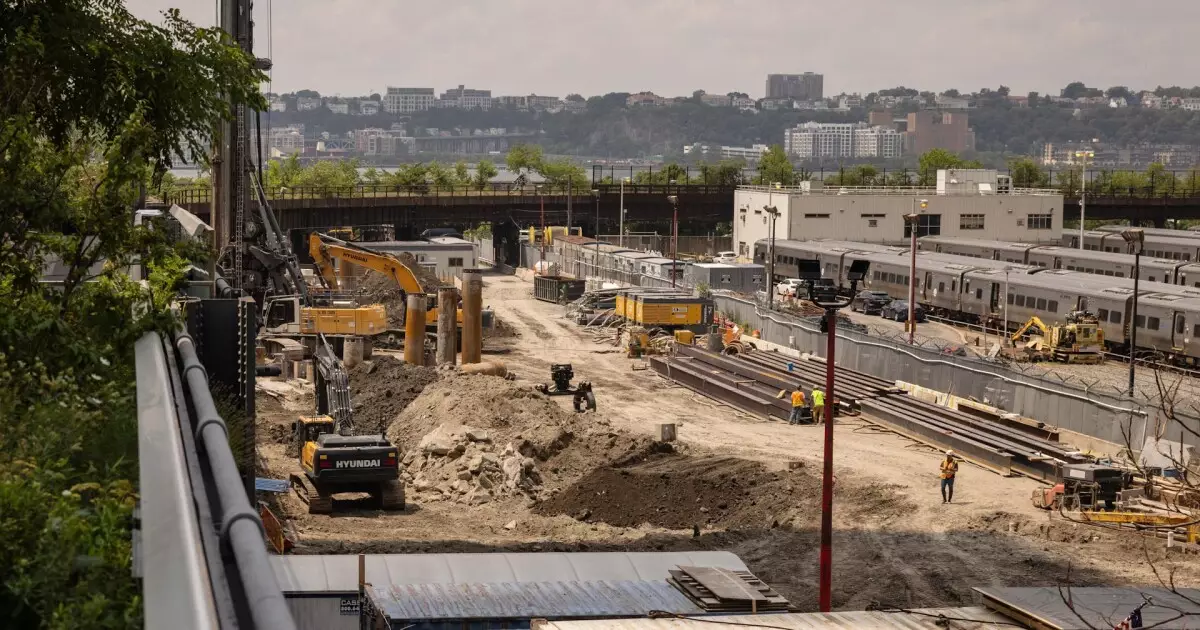The Gateway Development Commission (GDC) is on the verge of completing a significant chapter in infrastructure development with the Hudson Tunnel Project, a critical initiative aimed at bolstering rail connectivity between New Jersey and Manhattan. At a recent discussion hosted by the Municipal Analysts Group of New York, GDC’s CFO, Pat McCoy, disclosed that the project is poised to receive its final critical grant of $3.8 billion from the Federal Railroad Administration (FRA) by the end of the month. This grant, he stated, would allow the Gateway initiative to secure all necessary funding for this transformative $16.3 billion project, which is deemed the “most urgent infrastructure project in America,” a sentiment echoed by President Biden himself.
The Need for Modern Infrastructure
The context of the Hudson Tunnel Project cannot be overstated. The existing rail connection suffers from significant limitations due to its reliance on a century-old tunnel that houses two sets of tracks, which are currently overwhelmed by the volume of commuter and intercity trains. The planned Gateway construction will include a new tunnel that introduces two additional sets of tracks, effectively doubling the capacity and rehabilitating the aging North River Tunnel. This endeavor also addresses other critical elements of the infrastructure, such as the replacement of the antiquated Portal North drawbridge, which is currently 117 years old.
McCoy described the complexity of coordinating this multi-state initiative, which requires collaboration among six state and federal agencies. A key aspect of this project is not just the creation of physical infrastructure, but ensuring longevity and reliability for one of the major corridors of the Northeast, integral for both commerce and daily transport.
Funding As a Multifaceted Challenge
Securing financing for such a colossal project is, according to McCoy, an arduous and intricate process. With multiple federal grants having already been secured, including a record-breaking agreement worth $6.88 billion through the Department of Transportation, the GDC has managed to blanket a substantial portion of the operational costs. Importantly, this initial sum included an $800 million direct allocation for further operational expenses without immediate need for disbursement.
In addition to outright grants, the GDC explored other funding avenues such as Railroad Rehabilitation and Improvement Financing (RRIF) loans, successfully acquiring $4.1 billion—the largest sum ever appropriated through this program. Interestingly, the repayment on these loans does not kick in until 2034 and 2035, providing the GDC with a critical runway to execute the project. The complex amalgamation of federal, state, and banking contributions—totaling billions from multiple stakeholders—showcases a unique model of public-private partnership which is crucial for the project’s success.
While the financial framework appears solid, the Hudson Tunnel Project is not short of challenges. Historical political shifts have posed threats to funding security; the initiative was notably stalled during the Chris Christie administration in New Jersey, as well as by hesitations from the Trump administration concerning federal finance commitments. McCoy expressed cautious optimism about the current political landscape, noting that despite these hurdles, the GDC is advancing with a sense of urgency, virtually reaching the point of no return.
McCoy underscored the crucial balance of accountability and collaboration across all involved entities, highlighting that each partner gets a seat at the table to negotiate and resolve issues. This contrasts sharply with his previous experience at the New York Metropolitan Transportation Authority (MTA), which, with its overwhelming workforce and resources, presented a different set of operational dynamics than those currently facing the leaner GDC.
Currently, construction activity is vigorous, with several active projects underway to bolster the overall Gateway initiative. Among these, the Tonnelle Avenue Bridge and Utility Relocation Project in New Jersey will complete a new bridge by 2027, while the Hudson River Ground Stabilization Project is aimed at enhancing soil stability through innovative engineering methods. One of the primary goals of the GDC is to have active projects on both sides of the river to ward off political and operational vulnerabilities.
Looking forward, the GDC is set to enter a pivotal phase that involves tunneling for the Hudson Tunnel, a monumental task that will yield the first mile of twin tunnels. As the commission marches towards the 2027 deadline for project completion, the focus remains on securing smooth operational alignment, anticipating potential cost overruns, and ensuring all financial commitments are met without hitch.
The progress and planning involved in the Hudson Tunnel Project encapsulate a broader narrative about the state of American infrastructure in the 21st century. With careful management and innovative financing strategies, the GDC stands to not only deliver a critical transit solution but also invigorate discussions about future infrastructure projects that can lead the nation towards enhanced connectivity and economic vitality. The upcoming months promise to be transformative in laying down the groundwork for a streamlined and modernized transportation network that will serve generations to come.

